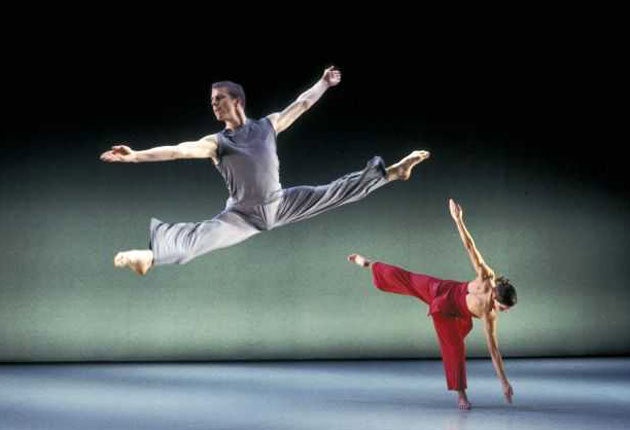Richard Alston Dance Company, Sadler's Wells, London
Steps in the right direction

British choreographer Richard Alston has a wonderful group of dancers: speedy, fluent, musical. For all their accomplishment, this company sometimes need more punch on stage. Alston's new production of Movements from Petrushka is swirling and stylish, but misses the tension at the heart of this story.
Alston's dance is a stripped-down response to Fokine's ballet Petrushka. He uses Stravinsky's arrangement of three movements for piano, not the complete ballet score. The puppet hero of the original ballet was danced by Nijinsky; the character's sufferings have come to be associated with the dancer's own collapse into madness. Alston's lone hero suggests the pain of both.
There are no costumed characters here. Rather than a puppet at a Shrovetide fair, Alston sets a single man, Pierre Tappon, against a crowd of corps dancers. Their White Russian blouses do hint at the ballet's St Petersburg setting. Liz Reed's fine backcloths, new for this revival, draw on the original designs by Alexandre Benois. The first is a shimmering image of the city at night, roofs and spires lit by a crescent moon. Pianist Jason Ridgway plays on stage, the crowd surging and turning around him. Alston's dances are neat and intricate, with folk inflections and bright changes of direction.
For the second movement, Tappon's Petrushka figure rejects the crowd, turning in on himself. Reed's second backcloth is a gauzy curtain with Benois's nightmare creatures – big-eyed imps or cats – flying across it in silhouette. Tappon curls himself inwards, one hand going to his head, or opens out into big, flowing poses.
For a work about madness and pain, this performance worked best in its lyrical moments. Ridgway's playing takes off in Stravinsky's sweeping lines; he has less energy in its spiky, percussive rhythms. Similarly, Tappon's open, stretched positions are stronger than his folded-in anguish.
Martin Lawrance's To Dance and Skylark is a bouncy response to Bach's second and third Brandenburg Concertos, played on tape. Rebecca Hayes dresses the dancers in simple shorts and tops, shades of blue replaced by shades of red.
Lawrance's quick, scampering steps are inventively shaped. He throws dancers into grand, conclusive poses at the start of a musical phrase, then gets them to push it further. It's a dance full of whirligig turns, couples and soloists spinning round and round to the pulse of the music.
Alston's Overdrive is set to the urgent rhythms of Terry Riley's Keyboard Study #1. The dancers race through their steps, throwing off huge leaps and high leg extensions as they drive onwards. Without a framing backdrop, the stage looks bigger and emptier, an open space for these fast, crowded dances.
Alston moves his dancers in blocks, then breaks away to follow a soloist. Wayne Parsons zigzags in and out of a crowd, dancing with weight and attack. The work ends with two blocks moving in contrast, patterns shifting and regrouping.
Touring to 19 June (020 7121 1100; www.theplace.org.uk)
Join our commenting forum
Join thought-provoking conversations, follow other Independent readers and see their replies
Comments